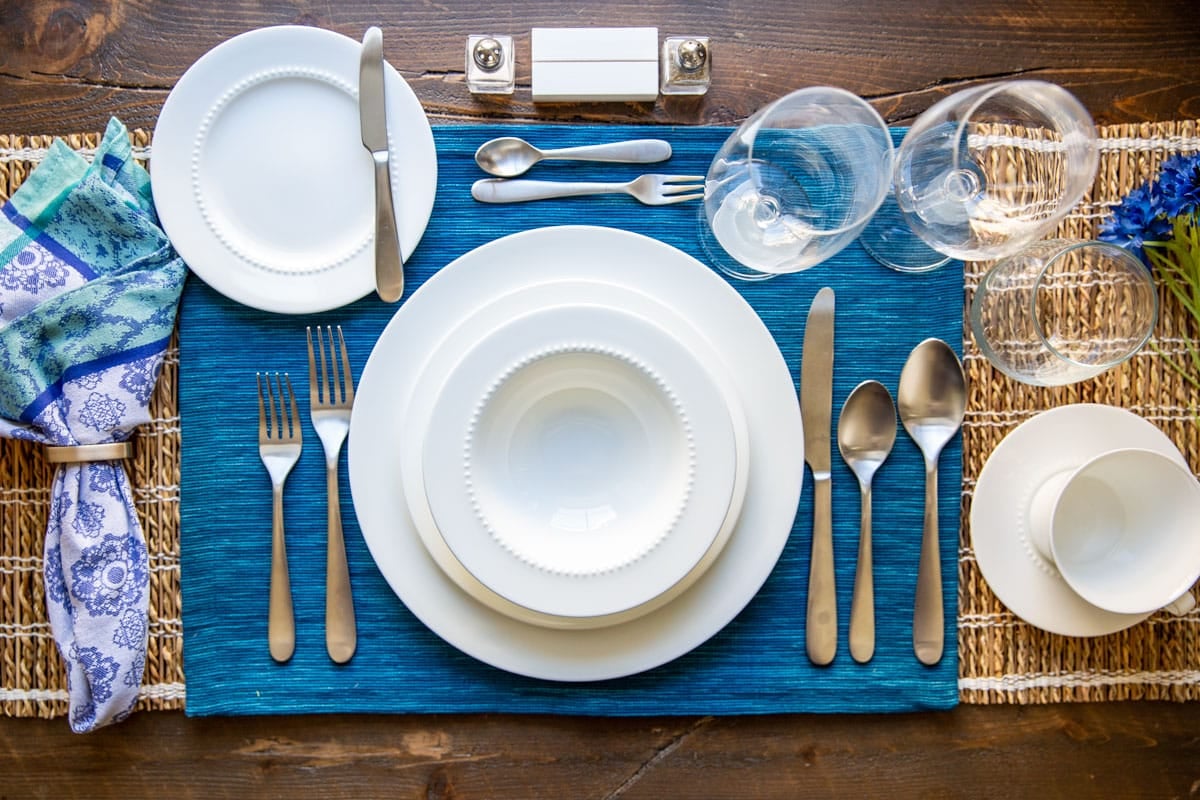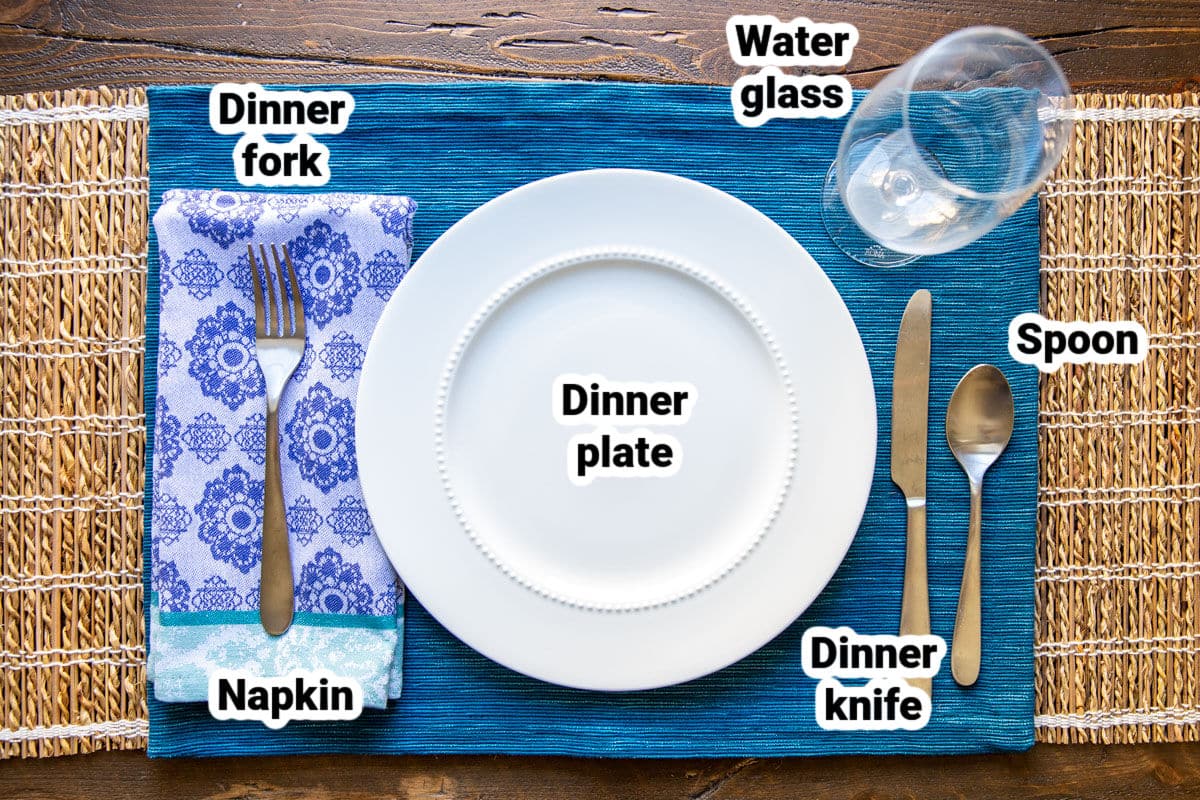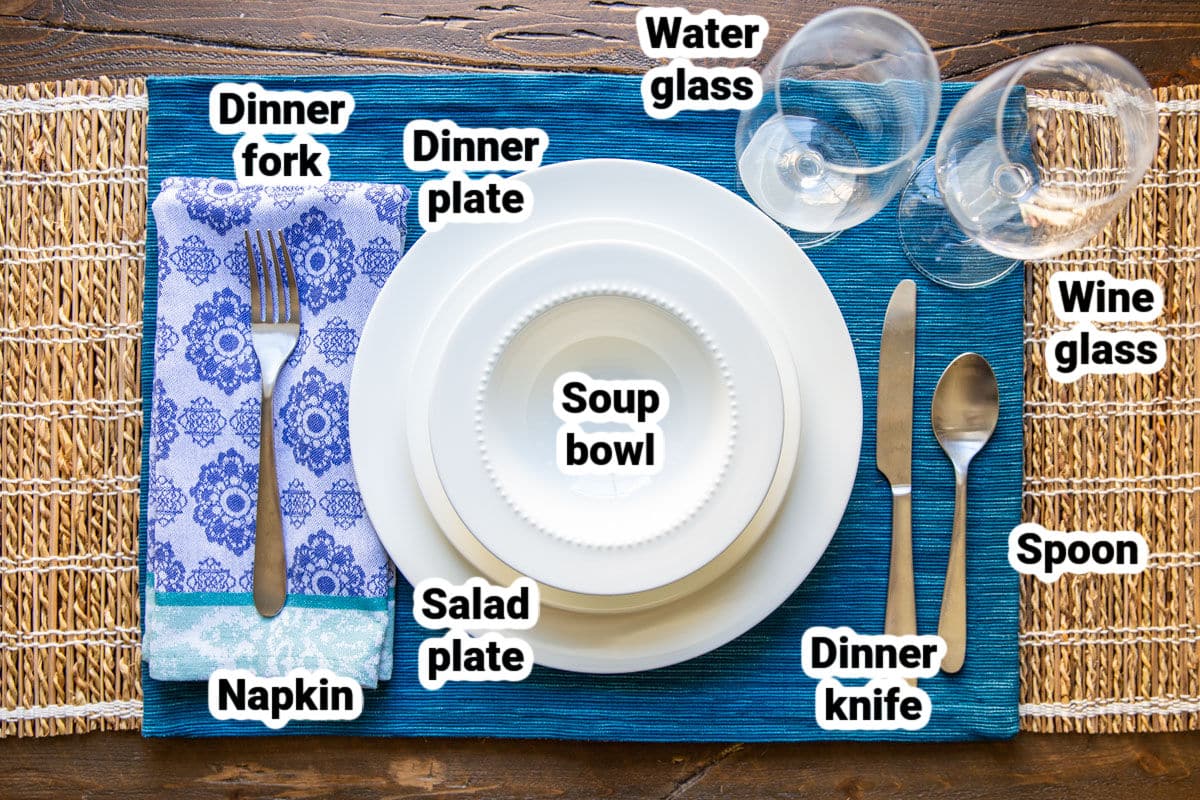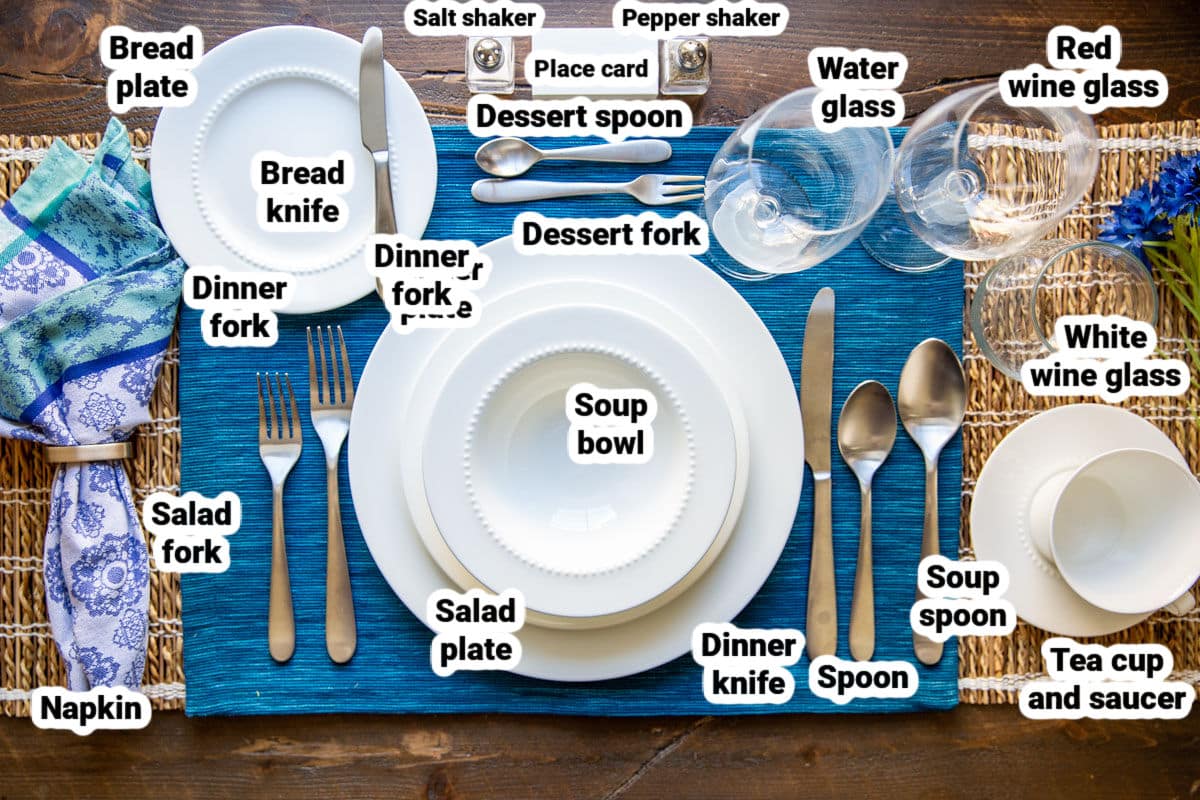How to Set a Table
Whether it’s a quiet supper for one or a dinner party for 12, learning How to Set a Table can make any occasion more noteworthy. Break out your best china and polish the glassware; here’s a breakdown of how to do it.

When it comes to mealtime, most families lean towards Casual with a capital C, grabbing what they can on the run or heading for the nearest screen.
Knowing how to set the table is both a useful life skill and the means to fostering connections among others. That might be encouraging your own children to treat each other more respectfully at the table, or it might be hosting a Friendsgiving with several families from the neighborhood. There are a host of occasions, from casual celebrations to formal dinner parties, when having a beautifully set table sets the tone for the evening.
And it doesn’t have to be stuffy or boring. Once you learn the basics, you can (and should) mix in your own style to make it fun, or elegant, or reflective of your personality or the theme of the meal.
Table of Contents
- Setting a table is important
- Types of table settings
- Basic Table Setting
- Casual Table Setting
- Formal Table Setting
- More trappings for the table
- More details
- Frequently Asked Questions
Setting a table is important
Setting the table, even for a small family meal, can be a way to slow down, enjoy the moment, and be present with each other. When gathering friends and acquaintances together for a shared meal, setting the right tone and atmosphere can foster a relaxing, intimate affair.
Just knowing how to set a basic, casual, and formal table should be enough of an etiquette lesson to foster a lifetime of delicious meals with friends and family. Furthermore, learning the placement of dishes, glassware, and flatware is also a great chore for kids of any age.
Types of table settings
While the setup for basic and casual place settings are pretty straightforward, the formal arrangement might have you scratching your head. Here are some things to keep in mind for all proper table settings.
- There is method to the madness: It helps to think the plate as the epicenter of the meal with each additional tableware placement in its orbit. For example, the water glass is placed closest to the plate, because people usually drink more water than wine. When it comes to flatware, the utensils for the first courses are those furthest from the plate on both sides. As the courses progress, guests eventually use the innermost utensils for the entrée. Dessert ware is placed the way it is so the guest can pull the fork and spoon down on either side of (you guessed it) the dessert plate. And knife blades are always faced inward, towards the plate.
- Only use what you need: This applies to all types of settings. Don’t set out a salad or appetizer fork if you won’t be serving one. No soup course? Leave out the soup spoon and bowl. Will you be moving into another room for coffee and dessert? Then create a station elsewhere using saucers, cups, and dessert ware.
- One step at a time: For the more elaborate settings, set the table slowly and deliberately so you don’t get confused or miss something. Place the plates, then the cutlery, one fork, knife, and spoon at a time.
Basic Table Setting

- Use the basic setting for: an everyday meal by yourself or with close friends and family; informal dinners.
- What you need: place mat, dinner plate, cutlery (knife, fork, spoon) a water glass, and a napkin.
- Place a place mat on the table and position a dinner plate in the very center of the table setting.
- Position the dinner fork to the left of the plate, tines pointing upward and outward.
- Place the knife on the right side of the dinner plate, blade facing toward the plate. Then place the spoon right next to the knife, on the right.
- Set the water glass above the knife, near the top right corner of the setting (at the one o’clock position if the plate was a clock face.)
- A folded napkin can be placed under the fork or on the plate.
Casual Table Setting
- Use the casual setting for: casual dinner party with friends or buffets.
- What you need: place mat, dinner plate, salad or soup plate, cutlery (knife, fork(s), spoon(s)) a water glass, a wine glass, and a napkin. The cutlery you need will depend on if you’re serving a salad, soup, or both. The wine glass can be red or white, as needed.

- Position a place mat at each setting and place the dinner plate in the center. If needed, lay the salad plate on top of the dinner plate. If there is a soup course, place the soup bowl on top of the plates.
- Place the dinner fork on the left side of the plate, tines pointing upward and outward. Lay the salad fork down to the left of the dinner fork.
- Position the knife to the right of the dinner plate, blade facing toward the plate. Then place the soup spoon to the right of the knife.
- Set the water glass above the knife, at the one o’clock position on the plate. Place the wine glass to the right and slightly above the water glass.
- A folded napkin can be placed on the plate or under the fork. Find some ideas on how to fold napkins here.
Formal Table Setting
- Use the formal setting for: fancy dinners, multi-course meals, holiday meals, and any occasion where you want to impress.
- What you need: place mat or tablecloth, dinner plate, salad, soup, bread plate, cutlery (knife, butter knife, fork, salad fork, dessert fork, spoon, soup spoon, teaspoon) a water glass, a wine glass, and a napkin. The wine glass can be red, white, or both, if needed.

- Smooth out an ironed tablecloth over the dining table. Place the dinner plate in the center of each setting. Position the salad plate, then the soup plate on top of the dinner plate.
- Place the bread plate to the top left of the dinner plate, near the 11 o’clock position.
- Place the dinner fork to the left of the plate, tines pointing upward and outward. Lay the salad fork down to the left of the dinner fork. If you are having a fish course, the fish fork goes between the salad fork and the dinner fork.
- Position the dinner knife to the right of the plate, blade facing toward the plate. If you are having a fish course, the fish knife goes to the right of the dinner knife. Then, place the spoon to the right of the knife, and the soup spoon to the right of the spoon. If you are having oysters, the oyster fork is placed to the right of the soup spoon (forks generally go to the left of the plate; the oyster fork is the only exception to that rule).
- Set a bread knife on the bread plate, blade facing inwards toward the plate. Directly above the dinner plate, place the dessert fork and dessert spoon. The handle of the spoon should point to the right; the handle of the fork should point to the left.
- Set the water glass above the knife, at the one o’clock position on the plate. Place the red wine glass to the right of the water glass. The place the white wine glass to the right of the red wine glass.
- A napkin can be folded inside a ring and placed to the left of the forks, or folded and placed on the plates.
- Finally, if desired, place a cup and saucer in the lower right corner of the setting, below the wine glasses and to the right of the spoons.
More trappings for the table
- Napkins: A basic, rectangular folded napkin placed under the forks is just fine for almost all occasions. Bonus points for ironing. You can also get creative with napkin folds and place the napkin directly on the dinner plate. If using a napkin ring, either place the napkin on the plate or to the far left of the forks.
- Chargers: Charger plates are used for a formal dinner table. Its purpose? To reserve space for the dinner plate. Soup and salad are usually served on top of the charger, but traditionally it is cleared away before the entrée. No hard and fast rules, though; if you love your chargers, serve the dinner plate right on top.
- Table linen vs. placemat: An ironed linen tablecloth is gorgeous, but so are table runners and very special placemats. Use what works and what looks the best with your tablescape and china.
- Centerpieces, flowers: Any and all are welcome, but try to keep them low so everyone at the table can see each other and chat.
More details
- Salt and pepper: If you have individual salt and pepper shakers for every guest, place them directly above the dessert silverware. Otherwise, several sets placed evenly along the center of the table should be fine.
- Place cards: If there is a seating arrangement, set name cards above the dessert utensils.
- Attention to detail: Pitchers of ice water for refills. Napkin-lined baskets for bread or crackers. Coffee ground and tea ready and waiting to be brewed when everyone finishes their meal.
- Keep an eye out: Not everyone is as table savvy as you are. Therefore, they might use two forks for their salad, or drop a spoon. As a host, make sure they have what they need before they need it, without drawing attention to the mistake.
- This is your table: Get creative. Candles, colored napkins, matching (or mis-matched) china, heirloom silver, or vintage glassware are all excellent ways to express yourself. It can still be formal, even if it’s a little funky.
- Kids: Getting the kids involved with place cards or a holiday centerpiece is a fun way to make them excited about sitting at a table with grownups, and will prepare them for future dinner parties, too.
Frequently Asked Questions
What are the 5 basic table settings?
Beyond basic, casual, and formal as discussed in this post, there are always the 5-course table setting and the buffet table-setting.
What is the difference between a three course meal and a five course meal?
Any meal that serves more than 3 courses is considered a “full course meal.” There is no standard of what the courses must be, but here are some general guidelines:
3-course meal: appetizer, entree, dessert
4-course meal: soup, salad, entree, dessert
5-course meal: appetizer, soup, salad, entree, dessert





